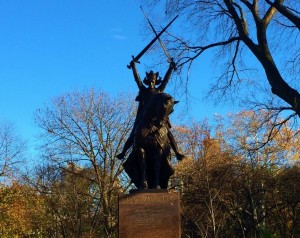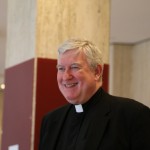By Liam Haber, FCLC ’19

There is a statue in the middle of Central Park of a Polish king, called the King Jagiello Monument. It was first presented at the 1939 World’s Fair, which was held in Flushing, Queens. Intended to be returned following the end of the Fair, the Nazi invasion of Poland prevented any transfer of the monument back to its homeland. Instead, the statue moved from Queens to Central Park, now sitting just east of Turtle Pond, in the shadow of the Metropolitan Museum of Art. It has been in this location since 1945, guarding the center of the park for the past 70 years. I learned all of this from Allison, a maintenance worker with the Central Park Conservancy who was my third stop on my trek around the park that ties all of Manhattan together. Continue reading A (Somewhat) Self-Guided Tour Through Central Park










